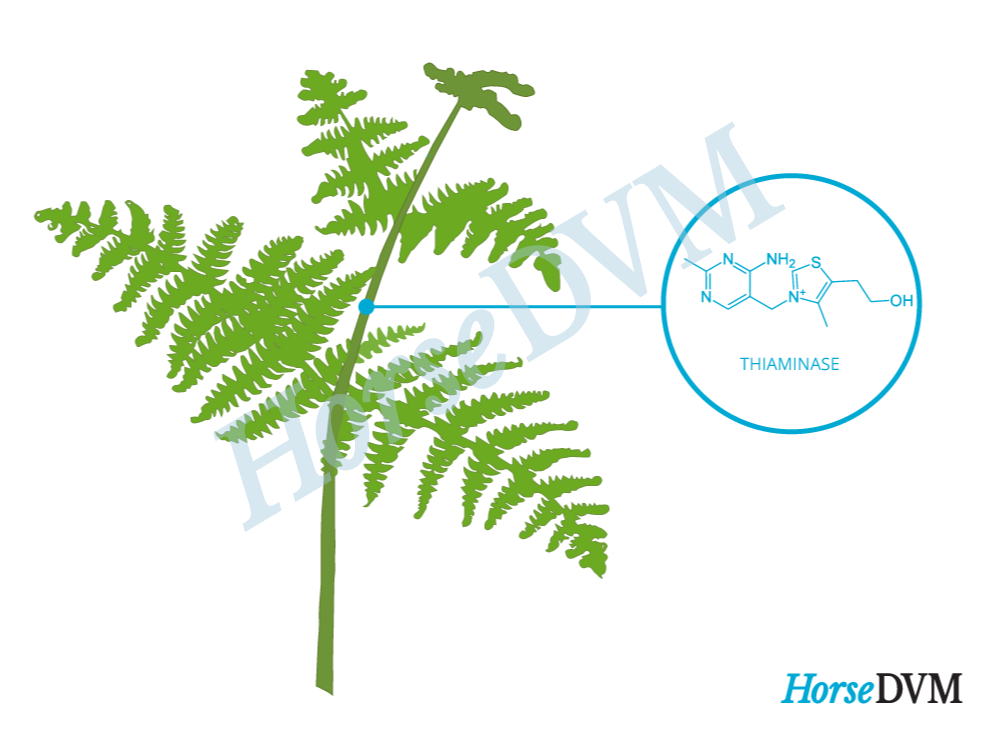Bracken fern (
Pteridium aquilinum) is a conspicuous, deciduous, perennial fern that is commonly found worldwide. In fact, it has been said to be the fifth most distributed common weed species of the world. Bracken fern reproduces by spores and forms branched underground stems, sometimes forming colonies.
Bracken fern colonies are usually found on hillsides at the edge of woodlands and thickets in partial shade. Up to 30 million spores may be produced by a single frond, and spore production tends to be greater in open habitats. Spores may remain viable for up to 10 years in soil. Bracken fern is also for the most part, fire-resistant, as the rhizomes send up new shoots after the old ones are burnt.
Toxic components
Bracken fern contains several different poisonous and carcinogenic compounds, including thiaminase, cyanogen glycosides, and ptaquiloside. However, the principal toxin is thiaminase. Thiaminase is an enzyme responsible breaking down thiamin, an essential B vitamin that's needed for proper functioning of the horse’s central nervous system. If horses ingest large quantities of thiaminase, it inhibits absorption of these essential B vitamins, resulting in vitamin B1 deficiency. Depending on the severity of the deficiency, without prompt treatment, it can be lethal to the horse.
Although horses are at risk grazing in fields that contain bracken fern, many cases of poisonings have occurred in horses due to unknowingly consuming hay that was contaminated with dried bracken fern. If horses consume hay containing 20% of bracken fern parts over a time period of 30 days, it can cause them to develop clinical signs of vitamin B1 deficiency, or bracken fern poisoning. For the average 454-kg (1,000-lb) horse, 1-2 kg (2.2-4.5 lb) of bracken fern would cause toxicity signs. Bracken fern also tends to be somewhat palatable to horses.
